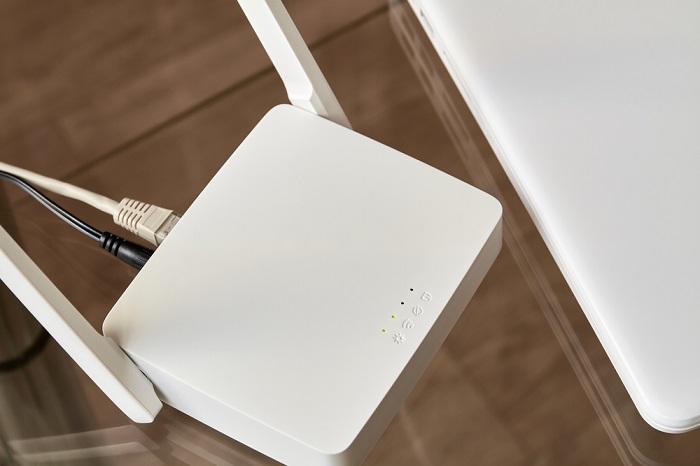
Your internet provider is happy to rent you a router with your internet service. Renting your modem and router is often the most convenient option, but it usually means you won’t get to utilize all the bandwidth you’re paying for. If you switch internet providers, you end up spending money on something you can’t even keep. If you’re already stuck with fees, this just adds insult to financial injury. That’s why upgrading your modem and router can help you gain control over your home network.
When to Upgrade Your Router
If you discover areas in your house that have a spotty connection and videos play poorly or web pages load slowly, and you have ruled out your connection speed as the culprit, your router might be due for replacement. Generally, internet providers don’t provide the highest-quality equipment, so if you’re using the router they provide to you, you might need to upgrade to a model like the NETGEAR R6700AX.
How Much It Costs to Upgrade Your Router
You can find routers on the consumer market for anywhere between $50 and $300. You don’t need to break the bank to upgrade from what your internet provider offers: Mid-range routers with better features can be found for $80 to $120. In comparison, router rental from your internet provider can cost over $150 per year. Your own router will last you multiple years, so it’ll quickly pay for itself by saving on equipment rental fees.
Internet Insights: Upgrading your router lets you better utilize the speeds you already pay for; it won’t increase the maximum speed of your internet plan. |
Faster Network
Upgrading your router isn’t the same as upgrading your internet plan, but not all routers are created equal. If your router uses an older Wi-Fi standard, you might be driving with the proverbial parking brake on. Old Wi-Fi standards like 802.11b allow for a maximum data rate of only 11 Mbps, which can be frustrating, especially for cable or fiber-optic internet users who pay for gigabit speeds.
The two most common Wi-Fi standards are 802.11n, capable of up to 450 Mbps, and 802.11ac, which goes up to 1.3 Gbps. If you find your wireless network lagging far behind the speed you’re paying for, upgrading your router to a newer Wi-Fi standard could alleviate your woes.
Increased Range
Unlike a wired internet connection, Wi-Fi signals are susceptible to interference and can travel only so far. If your router is in another room or behind large pieces of furniture, your network signal might struggle to pass through these obstacles.
An aftermarket router can broadcast a stronger signal than the one included by your internet provider. This means your home network will reach farther, but proper placement is still key. To maximize your router’s range, make sure to place it away from walls, out of closets, and far from large pieces of furniture. The best place is the center of the house so that it can reach every room.
Mesh Functionality
Sometimes, a home proves too large for one router to effectively service. In these cases, a mesh Wi-Fi router can help eliminate dead zones in your home network. In a mesh network, one router broadcasts a Wi-Fi signal that other access points receive and rebroadcast to other devices on the network.
Mesh networks work differently than traditional Wi-Fi range extenders. With a mesh network, it is one network throughout the house. With range extenders, you’re constantly connecting and reconnecting, depending on which end of the house you’re in.

Internet Insights: You can block specific websites at specific times of day (or altogether) via personalized settings – one of the myriad ways you can start to control your home network when you purchase your own router. |
No Throttled Speeds
If your internet plan includes a data cap, your internet provider may charge you a data overage fee if you exceed it. And, when you use its router, it can slow down your connection.
Think of your internet connection as a water pipe. Before you exceed your data limit, that pipe is open as wide as possible. After you exceed your data cap, your internet provider starts to close the valve, proverbially limiting the rate that water can flow into your home.
Your internet provider can’t access hardware that doesn’t belong to it, and your router is the “valve.” When you buy your own router, you buy your way out of having to deal with a throttled internet connection. You still have to worry about overage fees, though.
Increased Control of Your Network
Routers provided by internet companies generally lack a lot of the control features you can find on consumer routers. Quality of Service, or QoS, tools can help you control which applications get priority on your network. For example, if you’re on a crucial Zoom call with your boss and the kids turn on Netflix, you might suffer some video quality loss or latency issues during your meeting. With appropriately implemented QoS tools, your router will allocate more bandwidth for your Zoom meeting than the kids’ Netflix show, allowing work to continue smoothly. Let “Paw Patrol” stutter, not your meeting.
Dual-Band Capabilities
If your router doesn’t have the ability to broadcast over both Wi-Fi bands, upgrading to a router with dual-band capability can speed up your home network. A dual-band router broadcasts over two frequencies: the slower 2.4 GHz and the faster 5 GHz. Older, slower devices are relegated to the slower Wi-Fi band, while newer, faster devices can access the faster one to utilize the speed better.

